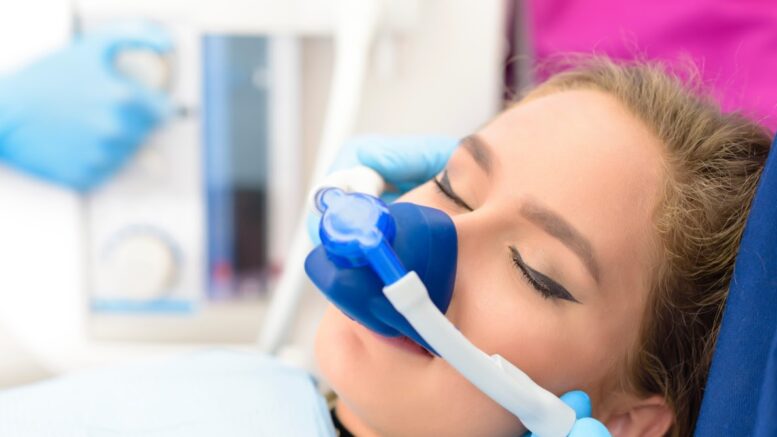Even if they have a lot of dental work to be looked into, many patients are uncomfortable with the idea of visiting a dentist. Some are even scared of going to one since they’re probably worried about getting hurt during dental procedures. However, dentistry practices have been advancing further over time. In exchange for comfort, technology has offered different options for what used to be a painful process.
What Is Dental Sedation?
Handling an anxious or fidgety patient doesn’t improve the operation’s success rate. Because on top of concentrating on the procedure alone, soothing the patient is another thing the dentist must focus on. Hence, sedating the patient is crucial to smooth out any dental procedures. Even in dentistry, dental sedation or sleep dentistry is available to calm patients, especially right before a procedure that might take more than 30 minutes.
What To Expect
Since it’s a medical procedure, a patient scheduled for dental sedation must be ready for the appointment. Because despite its importance, various situations might happen upon sedation. Hence, letting the patient know what to expect could give them enough awareness to prepare themselves, such as the following:
Different Factors Are Involved
Not every dental procedure calls for sedation. After all, sedatives regulate the patient’s brain activity or dull their senses. Hence, it’s safe to say that only specific requirements must be filled in for those drugs to be administered, such as the procedure, biological hindrances, or dental anxiety.
Dental procedures, like wisdom teeth removal, are most patients’ worst nightmare. Because if their dental problems are already painful, undergoing the needed procedure might be enough to change their mind, given how they push their pain tolerance beyond its limit. Depending on the sedative they’re administered, patients will have a better shot at alleviating the pain for comfort.
Considering that medical procedures require utmost concentration, having the patient’s body react to them involuntarily will disturb them. Although normal, patients with delicate gag reflexes or teeth sensitivity can easily compromise the operation and cause more damage. Sedating them helps dull their senses and dampen the pain until it reaches manageable levels or removes it entirely.
Still, getting rid of pain won’t stop the patient from being anxious, especially for children. After all, watching the dentist use all kinds of tools in their mouth while lying prone could push anyone’s stress levels to the maximum. Fortunately, some sedatives are strong enough to make the patient unconscious throughout the operation.
There Might Be Risks Or Complications
Medication often contains risks that patients must be aware of. And the stronger it is, the more potent its effects will be. Before taking any sedative, dentists must inform their patients of the side effects they may cause. After all, they’re designed to alter the patient’s senses and brain activity.
Transparency is a must from both patient’s and doctor’s sides. Patients must be honest about any pre-existing conditions, be it sleep apnea or pregnancy. As for dentists, listing the side effects and preventive measures are some of their responsibilities to ensure their patient’s safety.

Several Options Are Available
The requirements for dental sedation aren’t on the same level. After all, anxious and physical health conditions may be inconvenient but still different. Fortunately, different categories of sedation are available in varying levels, such as laughing gas, oral sedation, and intravenous (IV) sedation.
Laughing gas (known as nitrous oxide) is a quick-acting yet minimal sedative that delivers a calming gas through a mask worn over the patient’s nose so they won’t be scared of the dentist or feel pain from a minor operation. Since it wears off quickly, this sedative applies to all ages. However, the dentist can adjust the dosage during the procedure, depending on the strength needed.
Oral sedation is administered to the patient via pills. Unlike laughing gas, patients are conscious but relaxed when under oral sedation. Hence, they can still answer questions and follow instructions directed at them. Although, because they’re pills, it’ll take approximately an hour for them to take effect.
The most effective of all is IV sedation. Since it’s administered through the veins, IV sedation works just as fast as laughing gas but double the effects from oral sedation—maybe even more. Because of its thorough efficiency, it’s perfectly suitable for complicated and extensive operations.
Aftercare Is Non-Negotiable
Considering how sedatives affect the patient’s senses, their effects might last long after the procedure. Depending on the dosage or type of sedative, the side effects could affect the patient’s movements, among other things. Hence, before performing the procedure, dentists suggest having someone accompany their patients to bring them home safely.
Takeaway
Maintaining your oral health is one way to lead a healthy lifestyle. Aside from practicing the usual dental habits, visiting the dentist helps improve it further. However, many consider them intimidating. Fortunately, dentists have a solution, which is dental sedation. Although there are various things to be considered, patients are much more relaxed from start to finish, regardless of how painful the operation is supposed to be.
